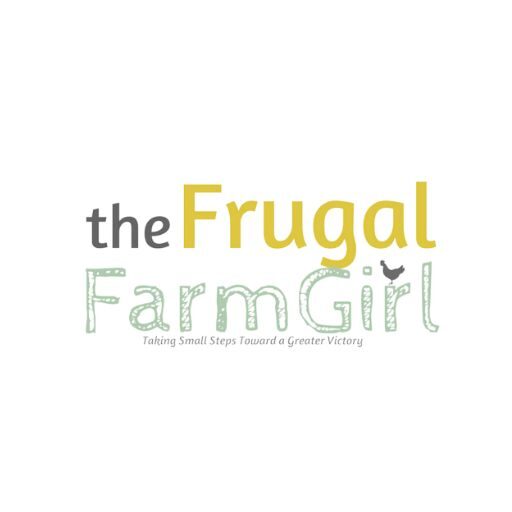Get ready to put down the supermarket bag and pick up your gardening gloves! Growing food can be a satisfying, frugal way of nourishing yourself with delicious produce free from nasty additives.
It can also be overwhelming when you think of what it takes when you start googling vegetable gardening for beginners, but I’m here to give you some inside frugal tips.
All you need are some instruction basics and planning, and before you know it – bam!

You’ll go straight from seed-planting to serving fresh dishes in no time flat. Each season is an opportunity for better nutrition while reducing spending on pricey store-bought fruits & veggies; start gardening vegetables today for long-term healthy gains tomorrow!
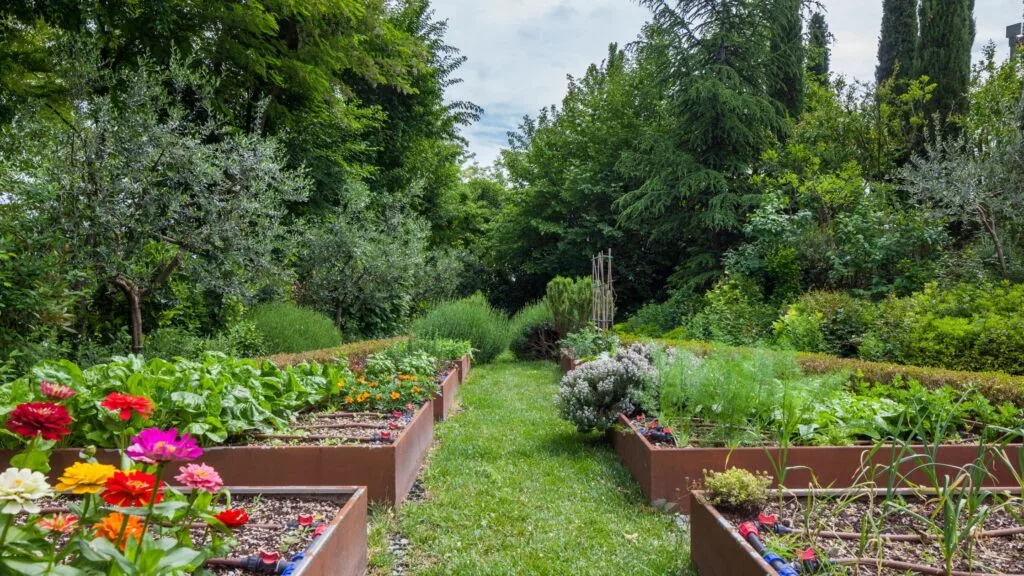
Planning Your Gardening Growing Space
Thinking about getting green thumbs? Maybe you should start with an indoor vegetable garden! Not only is growing your food a budget-friendly option, but it’s also great for those who don’t have the physicality to tend to outdoor gardens.
Plus, anyone of any age can try this type of vegetable gardening – how cool is that?! But, of course, you’ll need all the exact necessities as you would when planting outside; soil and sunlight are still essential components.
You’ll need to find the right container system for your indoor garden. Hydroponics is a popular choice, eliminating the need for soil and allowing plants to grow rapidly with power.
However, this method of plant growth can be expensive, though not prohibitive.
People may use an aquaponics system, combining fish and plant growth in a single aquarium. Container gardening can be done indoors and outdoors, offering many options depending on preferences.
Window boxes, pots, planters, baskets, barrels, and plastic containers all make excellent choices for a container vegetable garden as long as they have drainage systems.
A tower garden is an excellent option for those with limited space, providing vertical growth and plenty of room to fit plants. This works well for small patios or inside homes such as kitchens.
You don’t need to worry about how much room you have, just make sure the area can accommodate the tower and its drainage systems.
Raised bed gardening is an effective way to cultivate plants. Containers are typically constructed from wood or other materials and come in square or rectangular shapes, then filled with an appropriate material such as wood chips, grass clippings, cardboard, and soil.
The raised beds promote root growth and help garden plants thrive better. Combination gardening could also be employed; a person may choose to have both an indoor and an outdoor vegetable garden simultaneously.
You don’t need to limit yourself to just one gardening method. You can find a way to combine container and raised bed gardening, such as using pots inside the home or on a back porch and having a raised bed in the backyard.
You can get the best of both worlds and use every space.
For more tips on starting a container garden check out these posts:
- A beginners guide to Tower Gardening
- 6 Reasons Container Gardening is the Best Way to Grow Plants
- The Benefits of Container Gardening
- How to Plan Your Container Garden in 5 Easy Steps
- How to Choose the Best Outdoor Container Garden Location
- How to Choose Plants for Your Container Garden

Understanding Your Growing Schedule
For those just getting started in vegetable gardening, it’s essential to understand the growing schedule of your area. The USDA Hardiness Zone Map, referred to as a growing zone map, can give you an idea of when is the best time of year to plant your garden for successful growth.
This map helps vegetable gardeners learn which plants will flourish in their local climate and how to adjust their planting schedule accordingly.
The map divides the 11 areas into zones based on temperature, so understanding these planting zones is crucial for successful gardening.
All plants have a particular climate in which they thrive, and it’s important to replicate this climate to ensure their well-being – that means being able to withstand both hot and cold weather conditions.
When buying plants or seeds, check the information provided regarding their growing zone or climate tolerance; this way, you can identify which zone you should plant in.
Checking the USDA Hardiness Zone Map is essential for successful gardening; states may have varying planting times even if they’re on the same map.
For example, North Carolina’s optimal time to plant outdoors is in early to late spring, but in Michigan you should wait until the first week of April due to colder climates in the north. Snow later in the year can damage plants, so it’s essential to base your growing season on your region’s latitude.
If you live in a snow-prone state, Hello New York, you may need to extend your planting time by a few weeks or more. Several states are grouped into the same zones; for example, southern states are mainly within Zone 9 through 11.
While California and Florida may be on opposite sides of the map, they’re still within the same zone due to their similar temperatures.
However, these two states have different rainfall levels, so it’s important to consider this when selecting plants for your garden. This should be part of your decision-making process when setting up your garden.
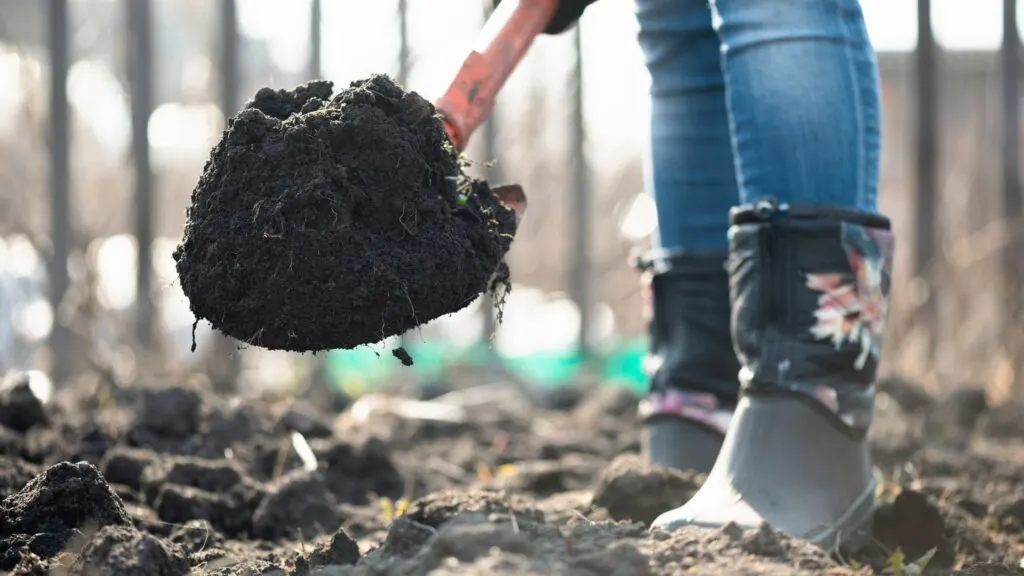
Making Sure Your Soil Is Ready
The quality of your soil is crucial to the success of any garden; it provides the essential nutrients necessary to nourish plant life. If your soil isn’t ready, you may face a limited harvest, weak plants, and an inability to grow anything properly.
Before you begin planting, it’s important to test your soil. Doing so can help identify any issues that could lead to a poor harvest, weak plants or an inability to grow anything effectively.
Checking the pH levels will give you an indication of whether your soil is ready or not. You can take soil samples and do the tests yourself, or use a kit to have them tested elsewhere.
If sending your soil off for testing, don’t just select a single area – the test needs an idea of the soil’s general condition to give accurate results.
Different parts of your vegetable garden may have different pH levels due to past exposure to fertilizer, composting and other treatments, which can affect the quality of your harvest.
When taking a soil sample, check several depths to understand how deep your plants’ root system will extend. This will help ensure that your garden has healthy soil from one end to the other, not just in isolated spots.
Don’t apply any manufactured fertilizers before testing your soil first – some chemical fertilizers can make bad soil even worse rather than helping to restore it.
To provide a layer of protection and help restore nutrients, consider mulching your garden with organic matter like lawn clippings and leaves when you’re not planting. If the soil tests show that pH levels are off-balance, then you’ll need to find a way to amend this; the more chemical ingredients used on the soil in the past, the more damage you may have done.
Acidic soil is determined by where it falls on the pH scale. If the test shows your soil level is between 0-7, then your soil is considered acidic.
Correcting a wrong PH balance is a simple and inexpensive fix. You just need to add lime. You can buy limestone at your local garden or home improvement store.
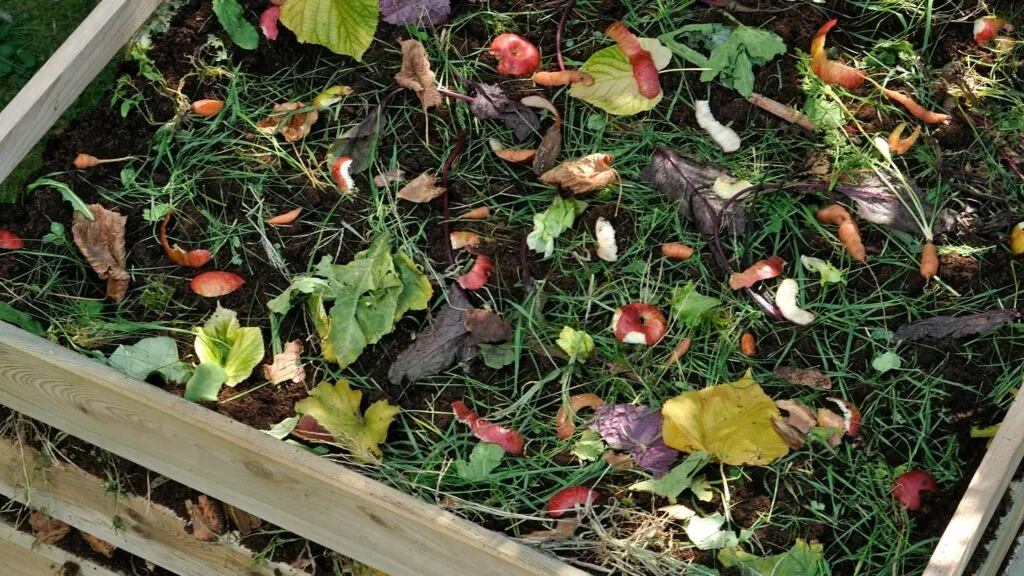
Composting and Fertilizing to Keep Your Soil Rich and Healthy
To prepare your first vegetable garden soil for planting, you’ll need to incorporate composting and fertilizers. If you’re new to gardening, you may not know what composting entails or how it works.
Essentially, composting is the process of breaking down organic matter, such as kitchen scraps or yard waste, into a nutrient-rich mix that can improve soil fertility. By adding this to your soil, you can ensure that your plants receive the nutrition they need for a successful harvest.
Starting a compost pile isn’t difficult; you can do it without purchasing any compost. The matter used in your compost can range from peelings from vegetables, fruits, coffee grounds, tea grounds, and bread.
For a compost bin, you can either get one or start a compost pile directly on the ground – though doing this risks attracting animals. To start your composting efforts, you can begin by adding your kitchen scraps into the bin.
For information on how to get started with composting, check out this post here.
You must turn the compost regularly, about once a week. This step is what helps the material to mix correctly. The turning process is also why some people use compost tumblers that they can turn by hand to properly mix the matter.
There are some mistakes that you’ll want to avoid with composting. First, don’t turn the composting too often. This can interfere with the compost’s heating step and prevent the fungi from growing like it should.
Another mistake to avoid is ensuring you don’t put meat in your composting bin. In a compost bin, meat has a strong odor that can cause your compost to be attacked by animals or rodents attracted by the scent.
Compost and fertilizer are not the same. Compost is used to prepare the soil for planting, while fertilizer provides essential nutrients to plants that may be missing in the soil or compost.
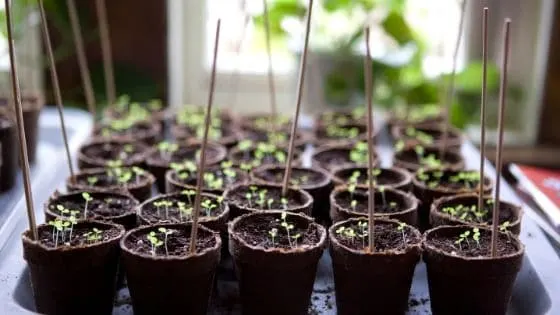
Growing Plants from Seed
Growing vegetable plants from seeds have plenty of benefits. Rather than shopping around for whatever is available, you get to pick and choose precisely the variety of plants you want.
For instance, if you like slicing tomatoes and cherry tomatoes, many different colors and seeds are available for both.
Growing vegetables from seed can be much more cost-effective than buying plants. Seeds have the added benefit of being hardy and stored for long periods, allowing you to get more harvest in return.
Plus, depending on the type of seeds you buy, you can use them for multiple vegetable gardens in the future. These seeds ensure you always have food available, even if grocery stores don’t have what you need.
Choosing the right seeds can be a challenging decision for new vegetable gardeners. Organic, hybrid, heirloom, and non-GMO seeds all offer different benefits.
Heirloom seeds are open-pollinated, which means they have been around for years. Hybrid seeds are a cross between different plants.
Non-GMO seeds are those that have not been genetically modified. It’s important to select varieties of seed designed to thrive in your specific planting area, as otherwise, you may be disappointed with the results when it comes time to harvest.
When shopping for seeds, pick varieties from foods you know you’ll eat!
If you are on a budget I always go the Dollar Tree seeds for 25¢ a pack!
Pick a variety of seeds from foods you know you will eat.
You won’t eat the harvest if you buy seeds for foods you don’t like. Avoid common mistakes that beginning gardeners often make with seeds. Many gardeners make the mistake of not hardening their seedlings off. Don’t immediately plant your seeds outside.
Planting times can vary depending on your region, so check the planting dates for your zone. Some types of seeds require germination indoors before they can be planted outdoors, and should not be buried too deeply to give the seed the chance to sprout.
Too much water can also harm a young seedling, so always follow the directions on the packet for correct watering amounts.
Finally, plants need direct sunlight for photosynthesis, so please give them the light shown on the seed packet. Some vegetable plants will only need partial shade. Some of those include Brussels sprouts, kale, beets, and carrots.
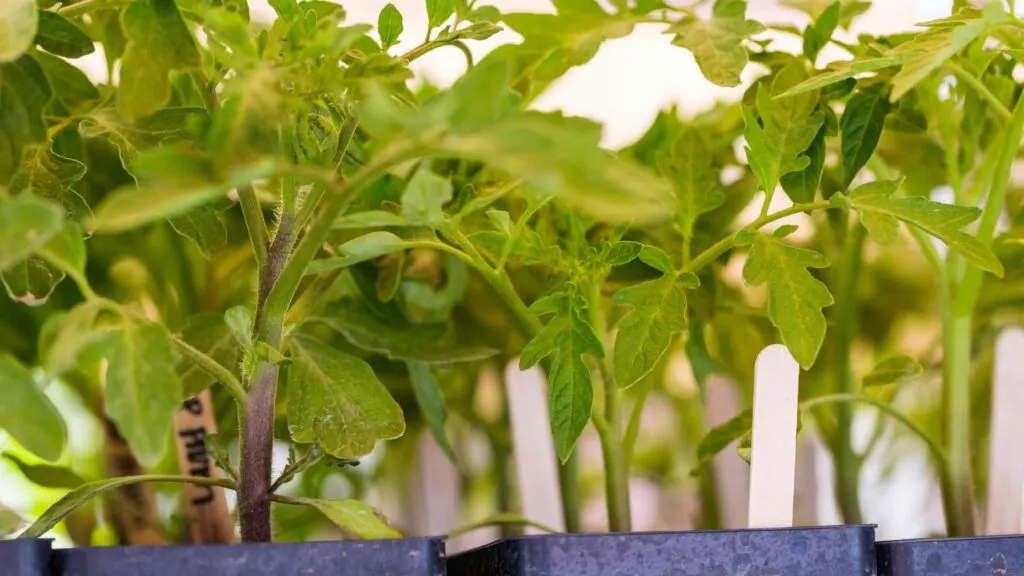
Starting Your Garden with Plants
You can use plants rather than seeds in your garden. For example, last year, I started all my tomato seeds indoors but lost track of time and decided to go to our local garden store for some different vegetable plants.
They had plants that were a few inches tall, all for $0.99 each. I loved it for this season of life I’m in. Always shop for the best price on plants because they quickly add up.
Selecting plants to grow is entirely up to personal preference. Pick the fruits and vegetables that you normally buy from the grocery store and you’ll be able to easily incorporate them into your meals.
Tomato plants, herbs, green beans, bell peppers, and broccoli. Growing your food also means saving money on groceries! Consider how much of each crop your family could use when deciding which plants to choose.
When choosing vegetables to grow, consider both the amount of yield they produce and the type of conditions they will need. It’s essential to select plants that are compatible with each other and won’t prevent others from growing — for instance, you shouldn’t plant potatoes in the same row as tomatoes.
For those just starting, go with hardy varieties that can withstand less-than-ideal circumstances.
Plants like carrots are easy to grow, while celery is tougher. When planting outside, make sure that it’s the right time. If you’re moving seedlings outside, you don’t want to do this too early.
To tell if it’s time to plant a seedling outdoors, look for three true leaves on the plant. Usually, these will have developed over 3 weeks.
Before putting out the plants or seedlings, could you check your soil temperature? Soil that’s either too cold or too hot can damage the roots of a plant. Then, dig the holes for your plants, remove the plant from the container, be gentle with the roots, and set the plant into the hole.
It’s a common mistake to believe you need to pry the roots apart or break up a root ball. You don’t need to do this and can cause the plant to wither if you break the roots.
After planting a seedling, cover it with soil and water it. If you see signs of wilting or yellowing, the plant is likely experiencing transplant shock and should be treated accordingly.
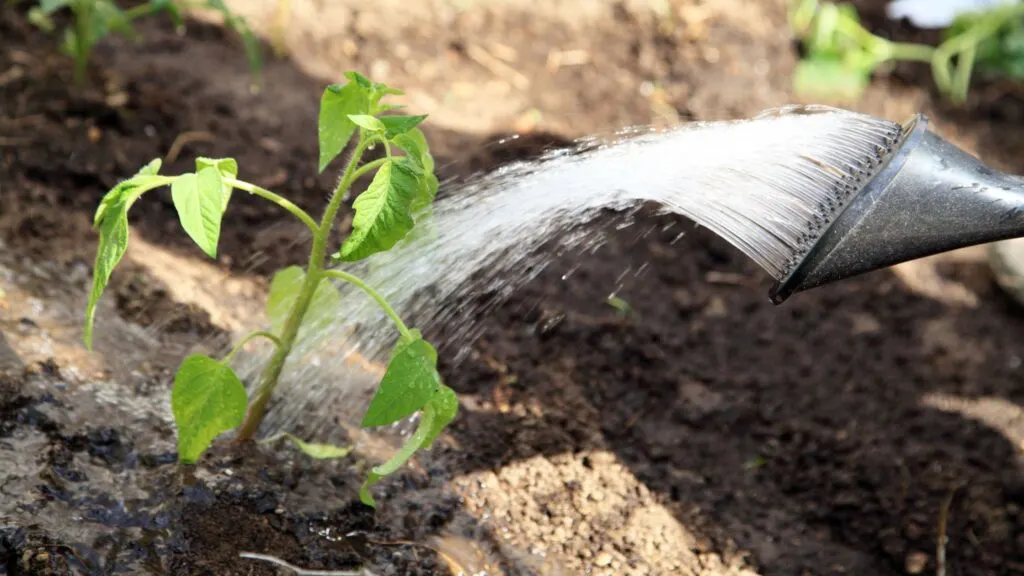
Create a Plan
Creating a plan is essential when starting your first vegetable garden. Consider taking the time to map out the different areas of your garden and the plants you want to grow there.
Additionally, think about companion planting, which is pairing plants with others that will benefit them, such as increasing flavor, deterring pests, and boosting growth. This can help to ensure a larger yield and a better-looking garden.
I follow companion planting as best as I can each year. This helps the keep the weeds down and pests away. It’s almost important to have a healthy crop rotation each year. Whatever you are planting this year, next year, plant roots in a different part of the backyard.
I’ve got a five free garden design websites you can use to help you figure out where all your favorite vegetables should go.

Make Sure You’re Not Over or UnderWatering Your Garden
Ensuring a healthy, productive harvest starts with proper care of your plants. Water is an essential part of plant life, but the amount can vary depending on the condition of the soil. To guarantee that your garden gets just the right amount of water, monitor the soil and water accordingly.
Some advice states you should water the garden regularly with a certain number of inches, but there’s no set amount that works for all gardens. You can easily end up over or underwatering if you follow a set rule.
To determine soil moisture, the best way is to take a sample and give it a gentle squeeze. If it holds together in your hand and can be molded, that indicates that the soil has enough moisture.
If your soil is sandy, you’ll need more water. The type of environment that you live in can also affect the amount of water you should give your garden.
For example, if you live in a state that gets a lot of cloud cover and plenty of rain, you’re not going to need to water as often.
If you live in an arid, hot climate, your plants will require more water than usual. Seasonal changes and extreme temperatures can also affect the amount of water needed.
If there’s a lot of rain in your area, it may be a good idea to invest in a rain gauge to track how much water your garden is getting. Then, you can adjust accordingly if too much water is found in the soil.
You’ll be able to take steps to prevent this. Your garden will let you know how its faring when it comes to watering. You’ll see signs. If the garden is getting too much water, the roots of the plants are drowning.
You’ll notice that the leaves start to turn yellow. Then, the plant will begin to fade or wilt.
Finally, the growth will become stunted. You may also notalgae or fungus growthngus on the plant or the soil.
Without adequate water, your plants will be unable to use the nutrients in the soil, leading to slowed or stopped growth.
Signs that your garden is not receiving enough water include cracked soil and wilting leaves which turn brown at the edges before eventually drooping and dying.

Keeping Pests Away from Your Edible Garden
Pests will always show up to dine whenever you plant a food garden. Though it’s part of nature for pests to feed on what’s growing, they can limit your harvest or destroy plants if not treated.
There are common pests that are a problem for gardeners. For example, the cabbage looper likes to dine on vegetables like potatoes, cauliflower, and tomatoes. It also eats fruits like cantaloupe or watermelon.
You’ll know you have this pest in your garden if you see holes in the leaves of your plants. Beetles can also be a problem in a garden and damage plants. You can get cutworms, which will go after seedlings.
This caterpillar insect loves to destroy a plant right where it grows at the base of the plant. Squash bugs can cause trouble in a garden, and so can grasshoppers. Grasshoppers like to chew on the tender leaves of plants, but they’ll also go after the stems.
If you notice ragged holes, you can tell if a grasshopper has fed on your plants. Spider mites attack food gardens by making a hole in the plant for eating. This causes damage to the plant and can prevent growth or cause the plant to die.
The problem with spider mites is that you can’t pick them off your food garden plants, since you can’t see them because they’re too small. However, there are plants that you can put into your garden that will help ward off pests.
Any plant with a foul odor for insects makes them hesitant to dine in your garden. So, instead, add plants like basil, which drives away insects. As an added bonus, it keeps flies and mosquitoes away, too.
Rosemary keeps pests away and so does citronella grass. Catnip keeps garden pests away, too. Besides using plants to keep pests away, you may also need to use a pesticide known as insecticides.
Pesticides for gardens can be organic or chemical. Either one will work to keep bugs from bothering your plants. However, keep in mind that some chemical pesticides don’t distinguish between warding off helpful insects and harmful ones.
Chemical pesticides can also be dangerous for people and animals. Natural pesticides are gentle on the earth and don’t damage the soil. Plus, they’re safe for humans and animals.
Diatomaceous earth is a natural insecticide. It’s an abrasive one that kills pests by drying out the exoskeleton. It’s safe for humans and pets, but you must get the one labeled as food grade.
This stuff works great around the barn for livestock too. We use it frequently in pens.
You can also use chili pepper spray to keep pests off your plants. You just spray it on the plants. Avoid contact with your skin or eyes since this can cause a strong human reaction.

Tools That Are Essential for Vegetable Gardening for Beginners
Regarding vegetable gardening, you need the right tools to help make the job easier. Start with a good pair of gloves. You’ll want ones that are streamlined and fit right since too big or bulky gloves can interfere with your ability to handle garden tasks.
You want to ensure the cuff is snug against your wrist since you don’t want them to allow things like garden debris or dirt into the gloves. Also, look for water-resistant material since you can absorb bacteria or allergens from the soil if your gloves aren’t waterproof.
When you finish using the gloves, wash them off with soap and water and hang them up to dry for future use.
Next, you need to buy pruning shears. These are used to remove parts of damaged or dead plants.
Plus, pruning plants helps them to thrive. When you’re done using them, clean off the debris and store them in a container or on hooks in your gardening shed. Be sure to buy a garden fork.
This is used to break up the soil to allow the roots of the plants to get the water and oxygen they need. This dual-purpose tool can be used to get weeds out of the way, too.
Store this tool out of the elements. If the tool handle is made of wood, you must oil it to prevent it from cracking. You’ll also need a garden trowel.
This tool is necessary for digging holes in the ground for planting.
When you’re done using it, wash off the dirt with soap and water, but make sure that you completely dry the tool before storing it. Next, invest in a good garden hoe for your food garden. These are used for preparing the soil as well as weeding.
There are different types of hoes. Some have ends like paddles, while others have ends that are triangle-shaped. After use, rinse off the hoe. You may need to use a wire brush to clean the end.
Once it’s clean, you can store it by hanging it from a hook or upright in a container with other long handled garden tools. Next, you must water the plants in your garden. Unfortunately, most people have a garden that’s too large to use a watering can.
Buy a sturdy garden hose with a nozzle to adjust the water flow. To store the hose, coil it and hang it on the side of the house. Don’t leave a garden hose lying in the sun since the rays and heat can crack the hose and cause it to leak.
Eventually, you’ll need to mulch your garden or you may need to bring in soil. It can be too time-consuming, inconvenient, and heavy to haul this material by hand.
Instead, buy a wheelbarrow to move items you need for your garden.
When you’re done using it, wipe it clean. For example, if your wheelbarrow has wooden handles, you may need to sand down them if they lose their smoothness.

The Easiest Foods to Grow for Beginners
As a beginner, you’ll want to start with foods that are easy to grow. These foods are hardy and are known to make it through common mistakes that new gardeners often make.
Green beans can survive in gardens that may not be completely ready. All they need is some warm soil that’s well-watered. So, even if your soil doesn’t have all the nutrients, this item still manages to flourish.
Tomatoes can be grown by beginners. You just need to stake them, and ensure they have plenty of sun and are ready to grow. If you’re a fan of peas and carrots, you’re in luck as a beginner gardener.
Both of these vegetables are perfect for first timers. Peas aren’t vegetables that need constant care or vigilance. Once you plant them, you need to keep an eye on the water.
They’re hardy enough that disease isn’t usually a problem, and pests can easily be taken care of by washing the plant off. They can also handle cooler weather, so they’ll still survive if the temperature drops after you’ve planted them.
Carrots just need cultivated soil, some room in between plants and they’ll grow. Make sure your soil doesn’t have a problem with drainage and you’ll be able to harvest plenty of this vegetable.
Beets are another vegetable that you can grow as a beginner. They’re hardy and can survive even if conditions aren’t perfect for their growth. It might surprise you to know, but lettuce is easy to grow.
It adapts well to various climates and can even survive when it’s hot outside. Of course, you’ll want to ensure it gets sunlight but not if the temperatures are too high. Just like lettuce, spinach is easy for a beginner to grow.
It can grow in sunny or shady areas. You just need to make sure the soil doesn’t retain too much water. Other things you can easily grow include radishes, cucumbers, and squash.
Because these are easy-to-grow foods that will survive even if the care isn’t perfect, you’ll be motivated to learn from any mistakes you make while growing them. In addition, you can learn from the steps you took to grow these.
Make notes of what you did while growing these beginner foods. Keep a record of when you planted and where. Note what you did regarding the soil and the weather conditions.
Keep track of how much or how little water you gave the plants. Also, write down what issues you had with pests, if any. This way, you’ll know what to do the next time you plant your garden.
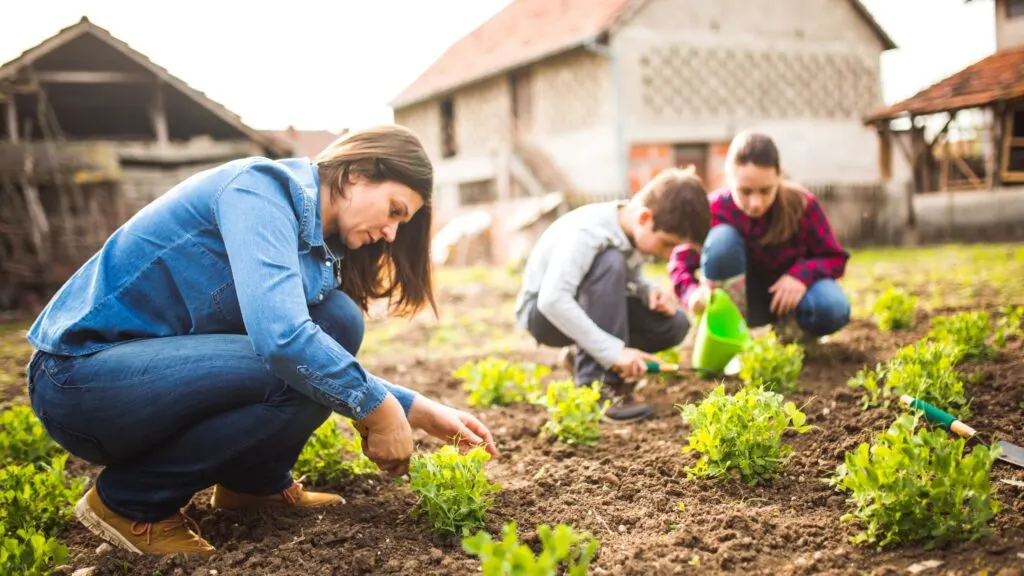
Grow the Food Your Family Loves to Eat
A garden is a labor of love. It’s fun to grow things, but it does take some effort. You certainly don’t want to waste that effort by trying to grow things that no one will eat.
Growing foods that rot or get tossed out can be wasteful and expensive. So instead of planting foods you think fit a garden, look at what you already consume.
Your family has favorite foods that they enjoy. You can grow these foods for them.
The items you grow in your garden can help your family be healthy all year. You can keep fresh fruit and vegetables around even in the wintertime.
Plus, you can also use any surplus that you don’t use. These foods are loaded with vitamins and minerals. Plus, many garden-grown foods are rich in antioxidants as well.
When you’re planning out your garden, choose foods that are your family’s favorites.
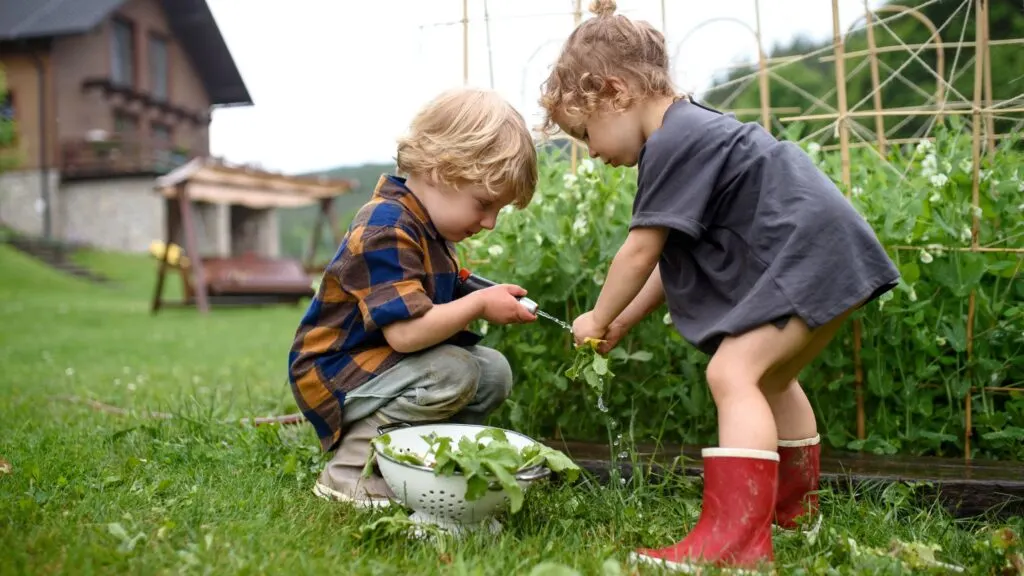
Get everyone involved by asking them what they’d like to have from the garden.
Then you can design your plan for the area. You’ll be able to grow certain plants together in the same space.
Anything that your family puts on the list can be grown. However, some food items may be a little more difficult to grow because they may take more care or involve more steps than you know.
But you can easily learn the steps you need to take for any food. For example, many families enjoy green beans. You can use these in casseroles, salads, soups, or as a side dish.
Green beans grown in the garden can come in a variety, too, so you don’t have to stick with one choice. Finally, potatoes are a favorite in many families. These can be used to make oven-baked French fries, mashed potatoes, scalloped potatoes, and more.
Tomatoes are easy for beginners, and you can grow Roma varieties or cherry tomatoes. You can also grow beefsteak tomatoes. These are perfect for sandwiches, salads, stews, sauces, and more.
If fruit is something that your family loves to eat, you can grow a wide selection of these foods. For example, watermelon is a sturdy fruit to grow in a garden and is often a family favorite. But, of course, you can also grow other melons.
It’s easy to grow berries in a food garden. You can choose from ones like blueberries, strawberries, raspberries or blackberries.
Some fruits may take a little more care, but can still be grown by a beginner gardener. For example, you can grow apples, peaches, cherries and more.

Foods You Can Grow That Deliver Big Yields
Some of the foods you grow in the garden will give you a small yield because they just don’t produce as much of a crop as other plants. However, some plants can give you a big yield.
One of these is tomatoes. The reason that tomatoes give such a big yield is due to the way that they naturally grow. Rather than growing single stalks, tomatoes grow in groups.
So you can have one tomato plant give you a yield that’s two or three times more than you expected. But, of course, tomatoes will vary in their gardening needs by what type of variety you choose.
Some plants will give you a greater abundance but smaller size. For example, if you choose to grow cherry tomatoes, you’ll get a lot more of these than you would if you planted slicing tomatoes.
Beefsteak tomatoes are the big variety, but if you plant these, your crop won’t yield as much as smaller tomatoes do.
Cucumbers are another high-yield plant. These are naturally hardy plants and grow a lot of fruit.
The yield you’ll get will depend on the number of vines you have. You can usually get over two pounds of cucumbers for each vine growing.
Peas grow up so they don’t take up a lot of garden space.
But for the small amount of space they take up, they give back plenty. Depending on the size of the row you plant, you can end up with five pounds or more. Even in different varieties, Potatoes grow well and abundantly in a garden.
You can harvest all the potatoes your family needs for a season if you plant them correctly. Leave at least 12 inches between your plants and end up with 25 to 30 pounds of potatoes.
This includes planting sweet potatoes as well. However, squash or zucchini is ideal if you’re looking for something to plant that’s hardy and can survive nearly any mistake.
These plants don’t need a lot of care or supervision to thrive. And when they’re done growing, they deliver a high yield. These can be grown vertically, too.
If you like Okra you are in luck! This plant is a fast producing plant that thrives when it’s hot outside. One row of okra plants can deliver 10 pounds or more of this delicious food.
The only drawback is because it is such a fast-producing food, you may have to spend additional time harvesting more often.
You can grow fruit that gives a high yield as well. For example, an apple tree will give you nearly 150+ pounds of apples each year. However, if you want to plant a peach tree instead, you can expect about 100 pounds of the fruit.
Planting blackberries will give you 10-15 pounds of fruit per bush. This has always been one of the easiest and favorite bushes on the homestead. And plum trees in a good garden can yield over 150-300 pounds of fruit yearly.
You may grow way more than your family can consume, so you can donate, preserve it, or share it with friends and family.
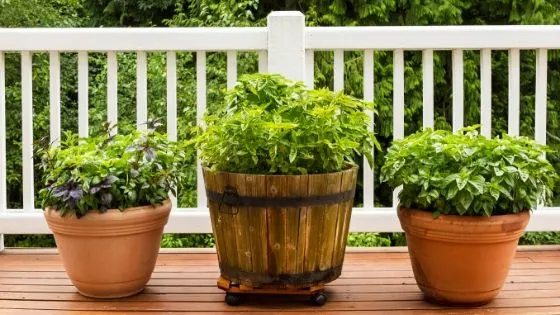
Don’t Forget to Grow Some Herbs to Flavor Your New Foods!
It’s fun and exciting to grow your foods in a garden. But you’re going to want a way to flavor these foods. So don’t waste your time searching the grocery store for herbs.
You’ll end up paying a lot more than you need to.
Plus, there’s no way to tell if they didn’t treat those herbs with insecticide.You don’t want that. You want the healthiest, least expensive option when flavoring your food.
Herbs need well prepared soil and having the correct drainage is important. You’ll also need to ensure you provide plenty of sunlight, so don’t plant in the shady garden spots when planting herbs.
Plant sage to use for your cooking. You’ll need to plant this in a sunny area. Then, when you’re ready to use it in your meals, you just take some of the leaves and the plant continues to grow.
When it comes to food preparation and flavoring dishes, basil is one of the must haves with cooking. This herb is commonly used because of its great flavor. In addition, you can add it to cold or warm foods, including beverages.
You can use rosemary from your garden to season soup or cold salads. This is an evergreen plant, which means you’ll have access to this herb all year long for your cooking needs.
Parsley is an easy-to-grow herb and is often used in cooking. You can plant this herb in an indoor or outdoor garden. If you like making sauces or are a chicken salad fan, you will want to grow chives.
This herb is used to flavor as well as garnish foods. One herb can be used in many different dishes, but it’s most often used in foods with a tomato base. This is oregano.
You can use this herb in things like pizza, spaghetti sauce, and as a flavoring if you like to make your sauces or marinades for meat. If you choose to plant oregano, it needs plenty of sunlight.
One herb that can season a lot of different foods is dill. You can use it to make homemade dips for crackers. You can use it to flavor seafood or soups. Of course, you can use it in your very own canned pickles! You can also use it in main dishes.
The only thing you must be careful about when growing this herb is where you plant it. It can’t tolerate being planted near certain other plants. So while it’s a hardy plant, you must be extra careful with the root system.
From food dishes to beverages, mint is an herb often used. You can use it in yogurt, tea, smoothies and more. Mint is a hardy growing herb, so it’s recommended for beginner gardeners.
More Preserving the Harvest Tips:
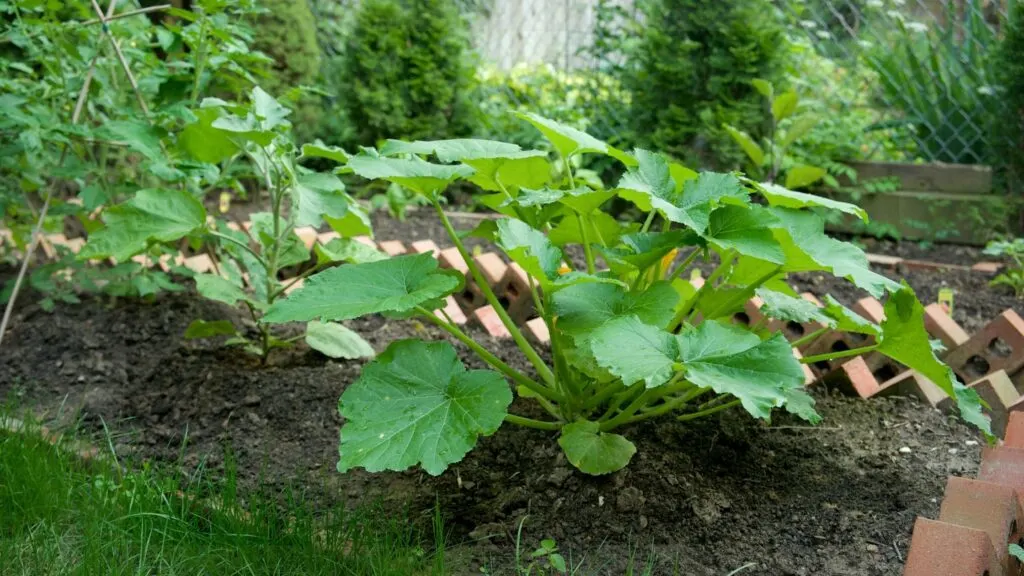
You’ve learned a lot about food gardening basics today and how growing your own food can lead to success in many aspects of your life. Now it’s time to take action and start your journey to a more sustainable, healthier, tastier future.
We’ve provided a step-by-step guide on how to get started so you have no excuse not to give it a try. Trust us, once you start reaping the benefits of homegrown produce, you’ll never look back.
So what are you waiting for? Get out there and start growing your way to success!
